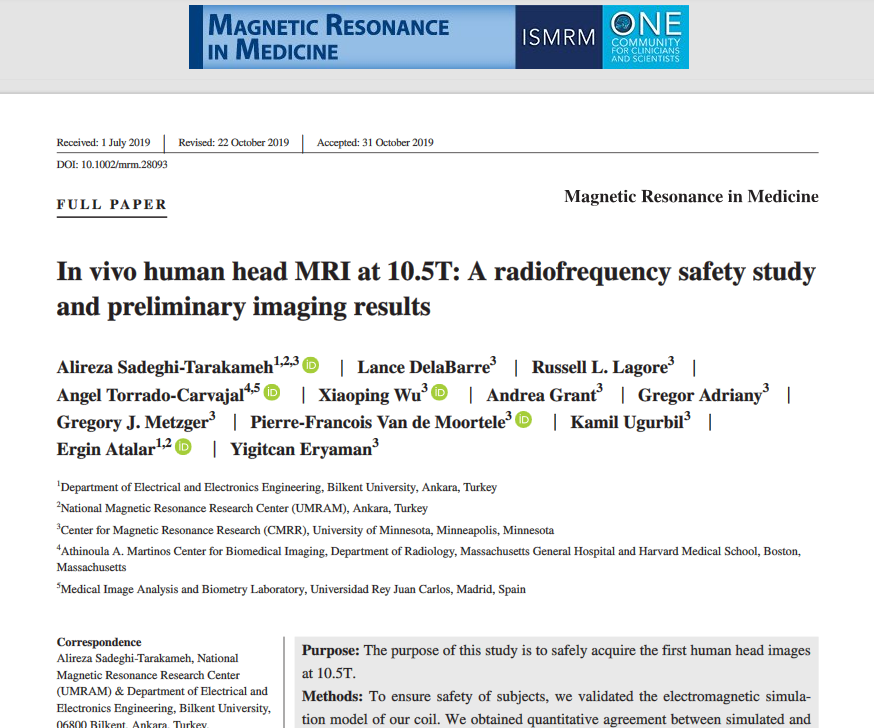UMRAM doktora öğrencilerinden Alireza Sadeghi‐Tarakameh, Prof. Dr. Ergin Atalar, UMRAM mezunlarından Dr. Yiğitcan Eryaman, Lance DelaBarre, Russell L. Lagore, Angel Torrado‐Carvajal, Xiaoping Wu, Andrea Grant, Gregor Adriany, Gregory J. Metzger, Pierre-Francois Van de Moortele ve Kamil Ugurbil tarafından “In vivo human head MRI at 10.5T: A radiofrequency safety study and preliminary imaging results" adlı makale, Magnetic Resonance in Medicine dergisinde yayınladı.
Abstract
PURPOSE:
The purpose of this study is to safely acquire the first human head images at 10.5T.
METHODS:
To ensure safety of subjects, we validated the electromagnetic simula-tion model of our coil. We obtained quantitative agreement between simulated and experimental B1+ and specific absorption rate (SAR). Using the validated coil model, we calculated radiofrequency power levels to safely image human subjects. We con-ducted all experiments and imaging sessions in a controlled radiofrequency safety lab and the whole-body 10.5T scanner in the Center for Magnetic Resonance Research
RESULTS:
Quantitative agreement between the simulated and experimental results was obtained including S-parameters, B+1 maps, and SAR. We calculated peak 10 g average SAR using 4 different realistic human body models for a quadrature excita-tion and demonstrated that the peak 10 g SAR variation between subjects was less than 30%. We calculated safe power limits based on this set and used those limits to acquire T2- and T∗2-weighted images of human subjects at 10.5T.
CONCLUSIONS:
In this study, we acquired the first in vivo human head images at 10.5T using an 8-channel transmit/receive coil. We implemented and expanded a previously proposed workflow to validate the electromagnetic simulation model of the 8-channel transmit/receive coil. Using the validated coil model, we calculated radiofrequency power levels to safely image human subjects.
MAGNETIC RESONANCE IN MEDICINE
DOI: 10.1002/mrm.28093
